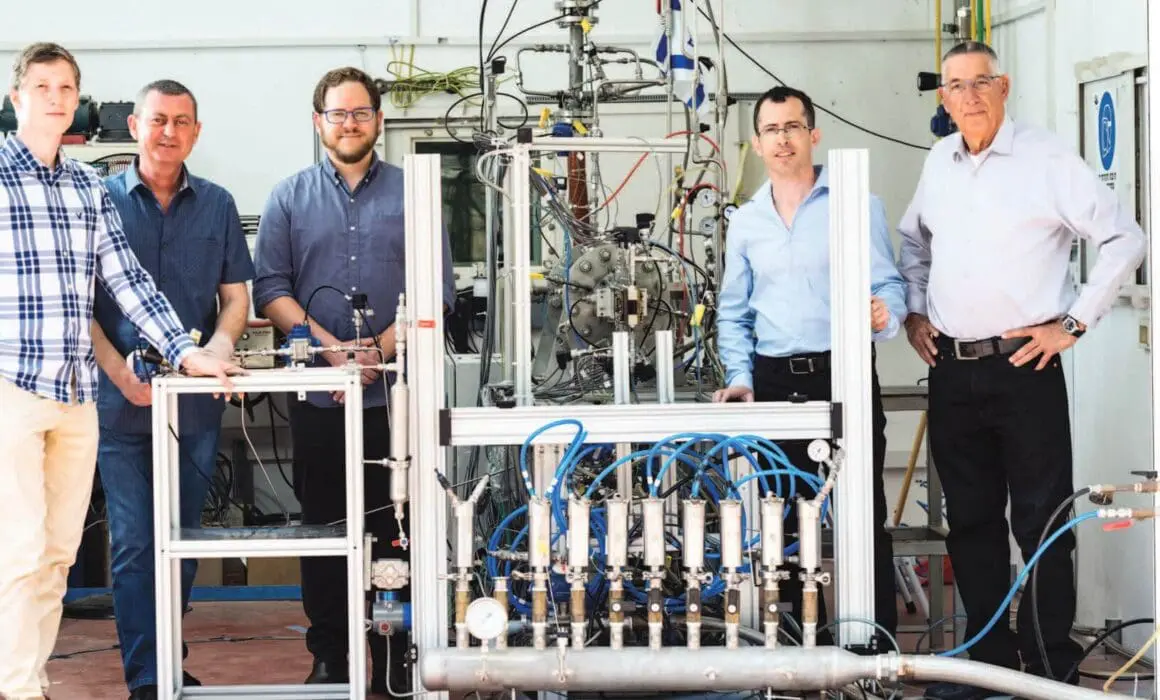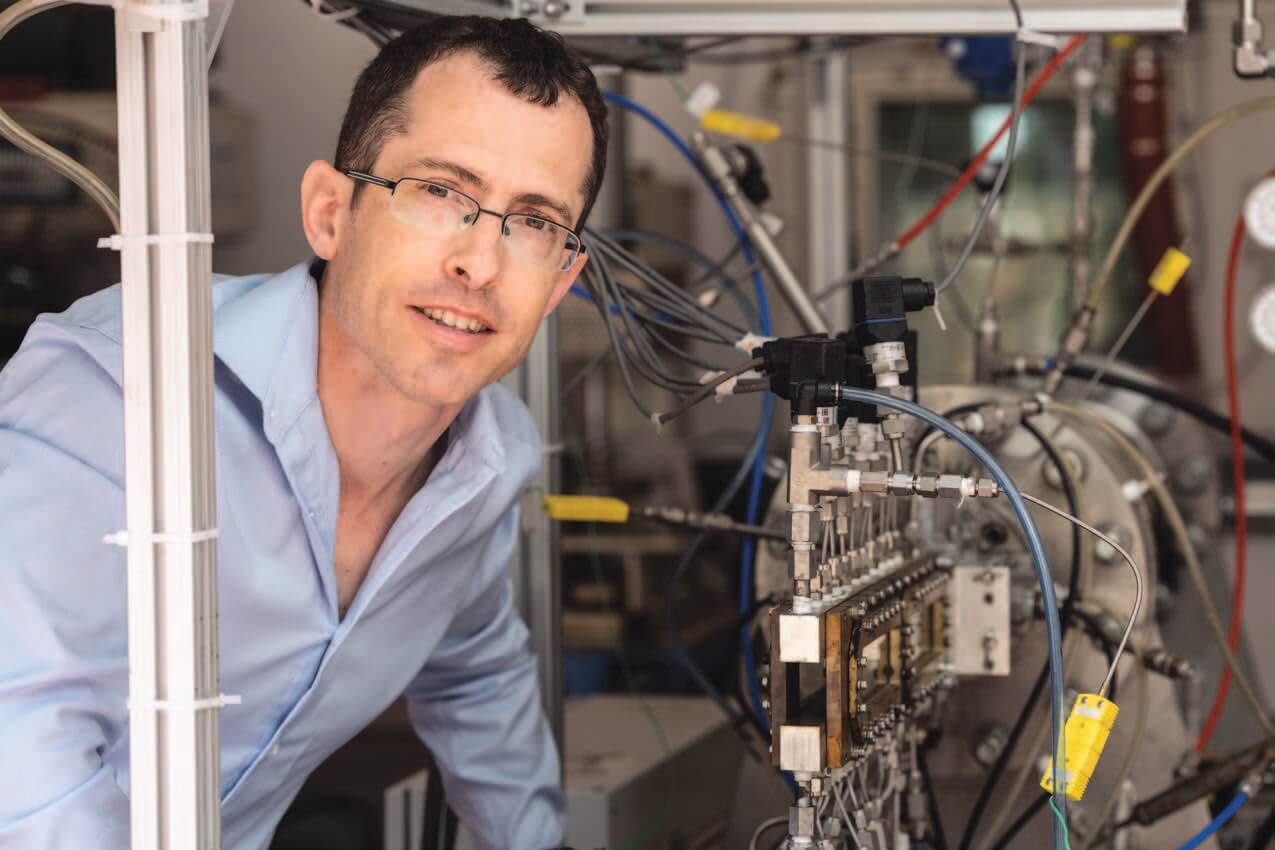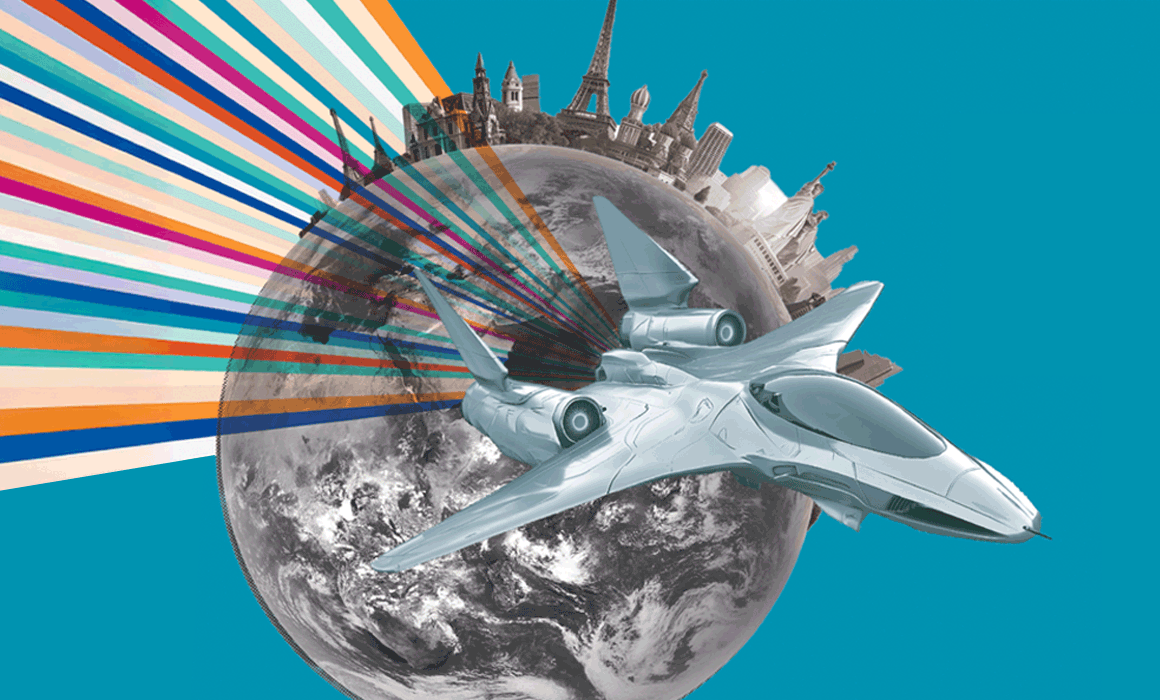A Hub of Hypersonic Flight Research

Technion Sets Up a Center for High-Speed Flight
Imagine traversing the oceans and back in a few short hours or, within a single day, flying to and from an orbital hub as a space tourist or a spacelab research assistant. Hypersonic flight is key to these and other human ambitions in space and on earth. Aerospace engineers have been grappling with the challenges of high-altitude hypersonic flight since the 1960s – when the United States’ North American X-15 research aircraft achieved an astounding 6.7 times the speed of sound (also referred to as Mach 6.7), hitting an altitude of 354,200 feet or 67 miles above sea level.
Six decades later, efficient, reliable, and safe hypersonic travel is within reach. Next-generation advances in hypersonic technology will enable practical, aircraft-like access to space and could eventually lead to much faster commercial air travel across the globe. In as much as all spacecraft entering another planet’s atmosphere fly at hypersonic speeds, they will be critical to NASA’s planned Moon to Mars initiative. For a country like Israel, ardently threatened by strategic foes near and far, hypersonic technologies constitute a vital “rapid-response” component to national security. The U.S., China, Russia, India, Japan, Australia, France, and the UK have all invested in the research and development of hypersonic technologies, as has Israel.
Israel is already at the forefront of aerospace technologies, and is one of a handful of countries with an independent capacity to launch satellites and place them into orbit. Technion graduates, who today work in industry and government, are leading Israeli aerospace innovation while collaborating closely with researchers at our Faculty of Aerospace Engineering, the only academic faculty of its kind in Israel. In concert with industry, Technion is now poised to tackle stubborn challenges to hypersonic flight head-on.
Unparalleled Flight Conditions
Even as safe, economical hypersonic flight is a dream within our grasp, significant obstacles remain. Numerous, divergent, and dynamically fluctuating forces act on hypersonic aircraft, with little warning and variable effects. The properties of air, and the resulting airflow dynamics, undergo sudden radical change as the vehicle accelerates, transitioning from subsonic to supersonic then hypersonic speeds. At increased speeds, the air becomes compressed, and pressure piles up ahead of each part of the aircraft, until shock waves form and interfere with the airflow; the lifting effectiveness of the wing and tail surfaces lessens, drag forces become more pronounced, and the airplane stability is compromised. Friction caused by the airflow along surfaces generates heat extreme enough to melt standard aircraft structures, while it simultaneously affects surrounding air molecules in a way that changes the magnitude of forces exerted on the vehicle.
According to Prof. Dan Michaels of the Faculty of Aerospace Engineering at the Technion, hypersonic flight conditions necessitate sweeping changes to aircraft. “Hypersonic aircraft will be completely different from any aircraft today. It cannot be overemphasized that hypersonic flight requires a revolution in every aspect of aircraft design – in materials and structures, propulsion and aerodynamic design.”
In short, high-speed flight approaching Mach 10 at altitudes as high as the outer edge of the earth’s atmosphere will depend on researchers’ ability to anticipate the totality of aerodynamic, thermodynamic, and chemical phenomena and to account for them in the design of hypersonic airframes, their physical geometries and the materials used, and propulsion technologies.

Getting Over The Bump
Given the uncertain aerothermodynamics of ultra-high-speed travel and the costs of failure, flight testing full-scale prototypes is a prohibitively risky proposition. The lack of flight testing has often been an Achilles’ heel impeding the development of hypersonic technologies, as has the tendency to take on multisystem phenomena one system at a time – rather than synergistically moving forward on multiple fronts of research and development.
Overcoming these difficulties, Technion’s new Center for High-Speed Flight (TeCHFlight) will have all the components necessary for rapid advancement of hypersonic systems. Headed by Israel Defense Prize recipient Amnon Harari, it will boast comprehensive state-of-the-art ground-testing facilities, together with computational fluid dynamics (CFD) simulation capacity enabled by Technion’s new high-performance-computing program.
“We are taking an approach that integrates unique experimental facilities and state-of-the-art diagnostic techniques to build a dynamic center, open to researchers in Israel and abroad,” notes Prof. Joseph Lefkowitz, a member of the Faculty of Aerospace Engineering who is heavily involved in the center. “Together with advanced CFD methods and development of novel high-temperature materials, we aim to close the gaps in our understanding of hypersonic systems. This is needed to develop the next generation of aircraft, and the next generation of engineers to build them.”
Multidisciplinary teams of Technion researchers from different faculties will work in tandem with Israel’s aerospace industries. Compared to colleagues abroad, many of the scientists and engineers on these teams are uniquely qualified – as they have real-world experience in aerodynamics and high-speed flight, as pilots or technical engineers in Israel’s air force.
From within dedicated facilities at the Morton and Beverley Rechler Family Foundation Research Building, the center will progress in six areas of expertise.
Bringing Aboard New Talent
The center’s multidisciplinary research regime and its vast network of partners in the Israeli industry, along with its high-level labs – the Aerodynamics Laboratory, Hypersonic Compression Tunnel Laboratory and Advanced Optical Diagnostics Laboratory – will grant it world-class status among universities studying hypersonic technologies.
Offering endless research possibilities, the Technion’s Center for High-Speed Flight is set to become a magnet for faculty recruitment and trigger collaborations with elite research institutes and universities overseas.
Because they will have the incomparable opportunity to train and work at the center, Technion graduates will garner higher professional capabilities that will give them a significant edge on peers entering the industry at the same time.
“Hypersonic flight is one of the few ‘not yet discovered’ remaining frontiers of aeronautic engineering,” said Harari, summing up the pioneering nature of the center and its anticipated impact on new generations of researchers and innovators. “The field poses significant scientific and practical challenges to the community of researchers, making it attractive to every young academic who is looking for a career in an area of great potential. We believe that the knowledge generated at the center will not only be significant for the basic goal of enabling and supporting high-speed flight but may open new horizons in parallel, also in not related topics that could make use of the discoveries, the methods and the materials developed at the center.”
More High-Tech Future stories

Technion Researchers 3D Print Tree Shelters


